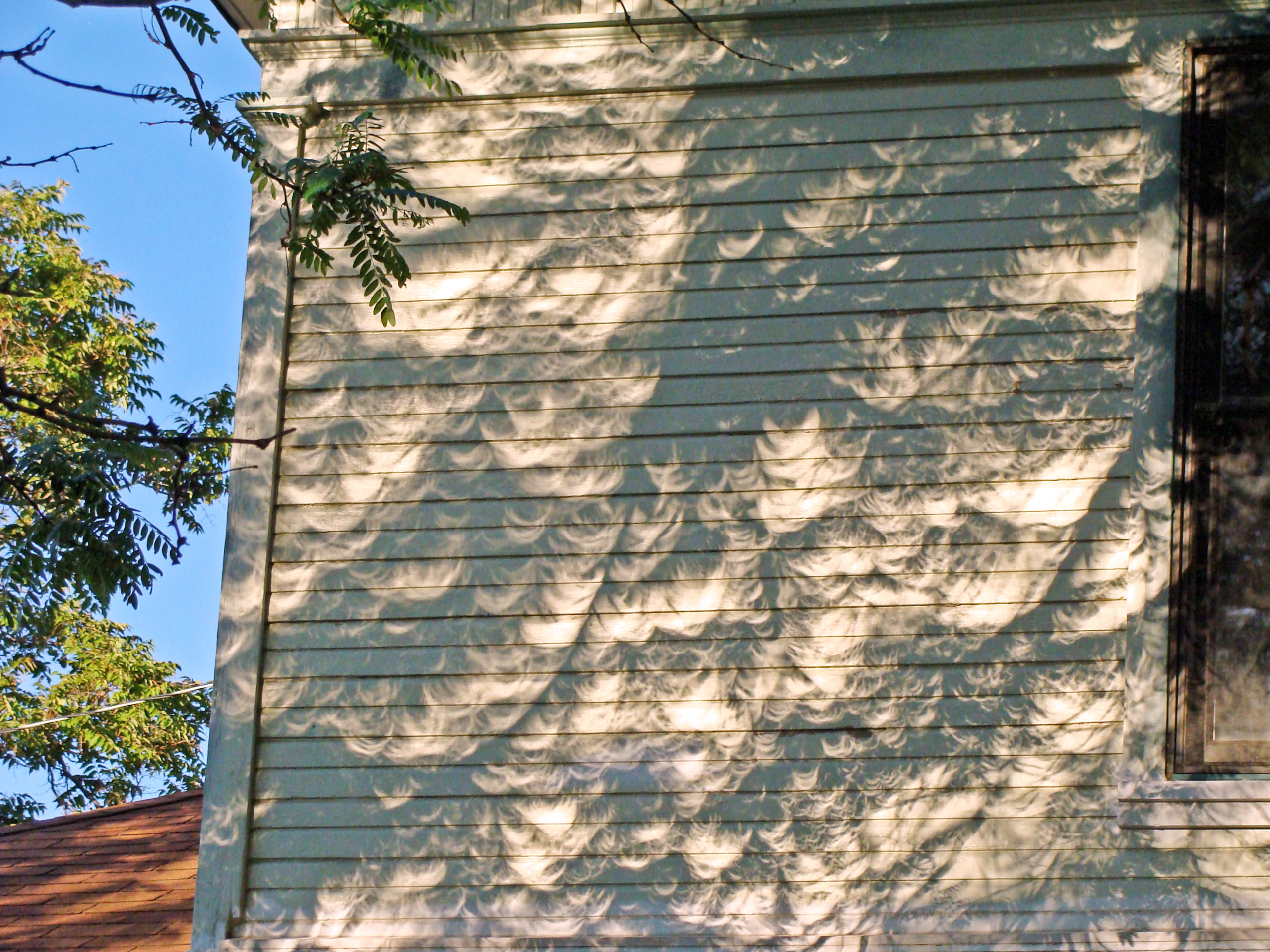Nov 22

FAT SOLAR SMILES – Sunlight shining through the shadow of a leafy tree looks like fat crescents during a partial solar eclipse. People around Sault Ste. Marie should see the same effect — only with fatter-looking crescents – when the moon covers two-thirds of the sun at 2:20 p.m. on Monday, Aug. 21. Provided the sky is not overcast, Lake Superior State University faculty will have telescopes set up 1-3 p.m. between Crawford Hall and the Kenneth J. Shouldice Library for public viewing of the partial eclipse. (LSSU/Wikipedia Commons)
SAULT STE. MARIE, Mich. – Provided the sky is not overcast, Lake Superior State University faculty from the School of Physical Sciences will have solar-filtered telescopes set up for public viewing of Monday’s a partial eclipse of the sun, from 1-3 p.m. Observing takes place on the sidewalk between Crawford Hall and the Shouldice Library. Professors will share solar sunglasses and filters to safely view the eclipse without a telescope.
A solar eclipse happens when the moon passes in front of the sun along our line of sight. On Aug. 21, all of North America will view a partial eclipse, when the moon obscures part of the sun. A total eclipse will only be visible inside of a 70-mile-wide path that crosses 14 of the United States from Oregon to South Carolina.
Sault Ste. Marie, well north of this path of totality, will see just more than two-thirds of the sun’s disk covered the moon. For the Sault, the sun’s brightness in the sky will appear unaffected. Visual effects, such as the appearance of a sunny day viewed through dense polarized sunglasses, only become visible when more than 90% of the sun is covered.
For Sault Ste. Marie, the eclipse starts at 1 p.m. when the moon’s silhouette appears to take a tiny bite out the right edge of the sun. Mid-eclipse, when the moon’s bulk covers 68% of the solar disk, is at 2:20 p.m. The eclipse formally ends at 3:37 p.m. when our moon’s curved shadow exits the sun’s far left edge.
The only safe way to look directly at a partially eclipsed sun is through special-purpose solar filters, such as ISO 12312-2 safety-certified eclipse glasses or handheld solar viewers. Homemade filters or ordinary sunglasses, even very dark ones, are not safe for looking at the sun.
An alternative method for safe viewing of the partially eclipsed sun is pinhole projection. In this method, you don’t look directly at the sun, but at a projection on a piece of paper or even the ground. For example, cross the outstretched, slightly open fingers of one hand at right angles over the outstretched, slightly open fingers of the other. Do not look at your hands, but at the shadow of your hands on the ground. The little spaces between your fingers will project a grid of small images, showing the sun with a bite out of it during the partial phases of the eclipse.
That failing, nature has ready-made pinhole solar projectors all around us. Note leafy tree shadows on the ground and against buildings 15 minutes either side of mid-eclipse. Dappled sunlight will take on shapes of fat crescents.
CONTACT: John Shibley, 906-635-2314, (jshibley@lssu.edu)